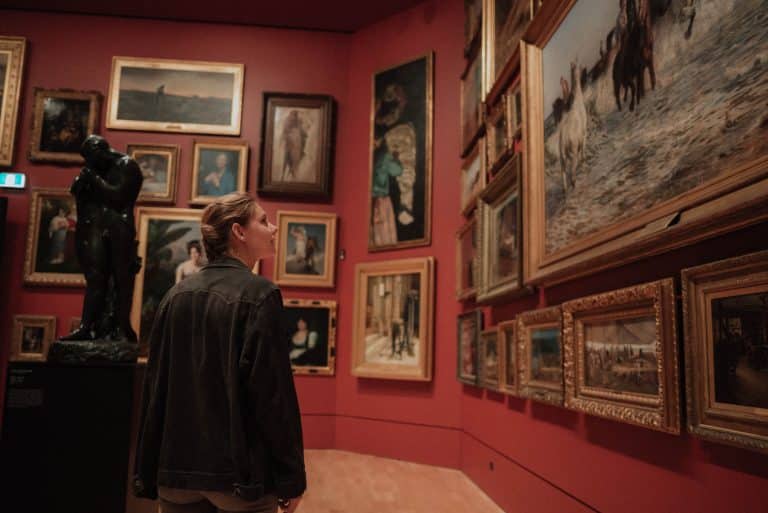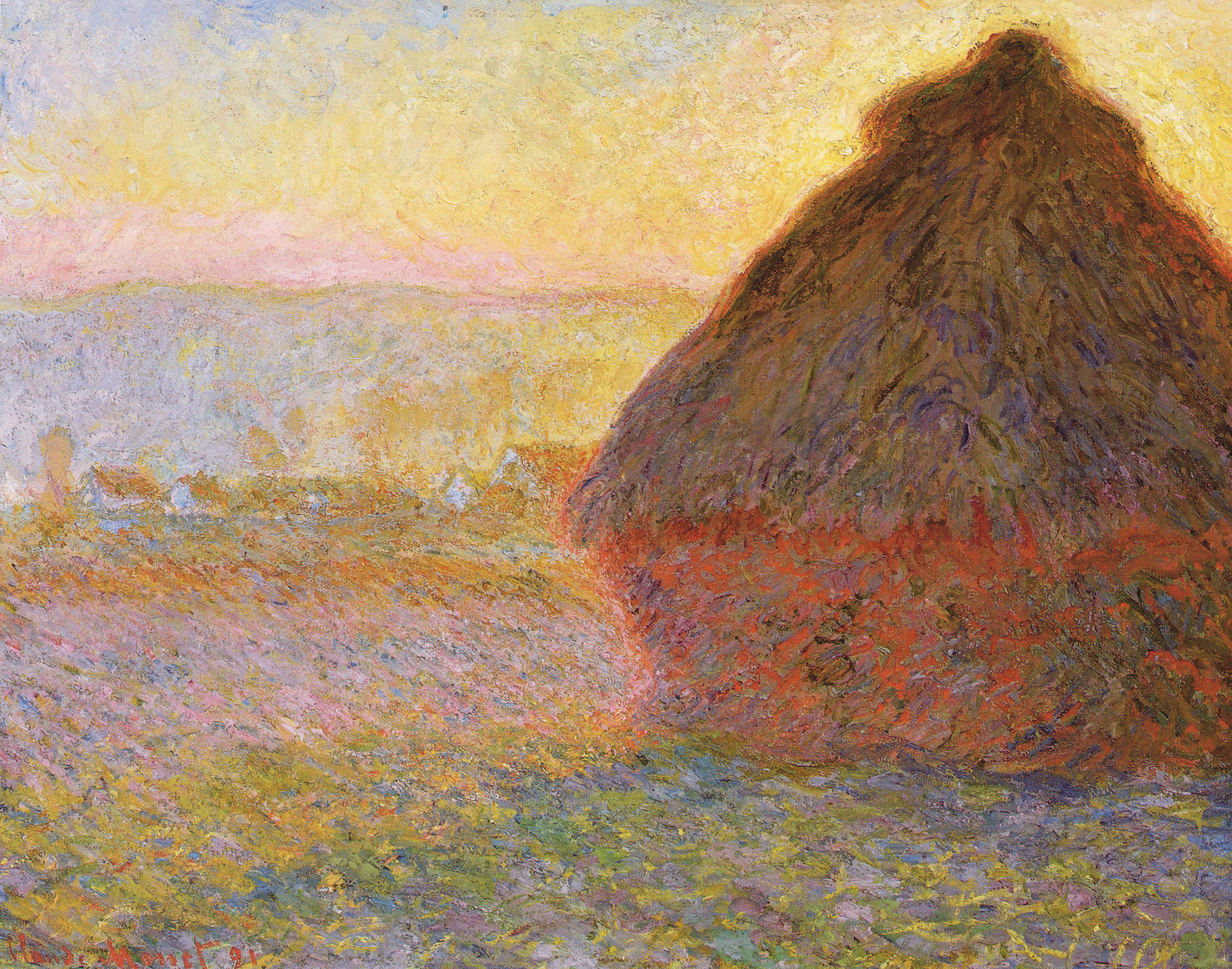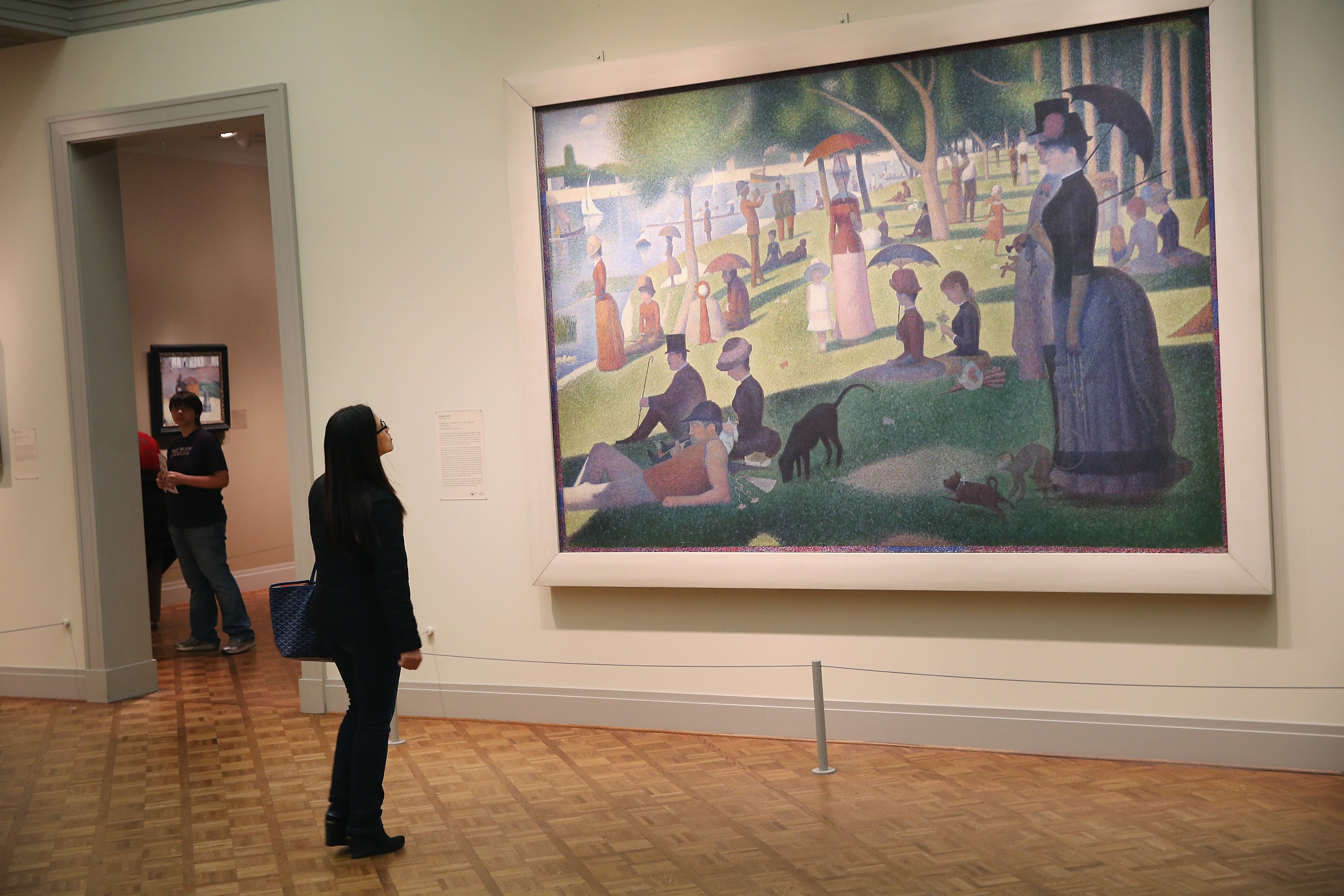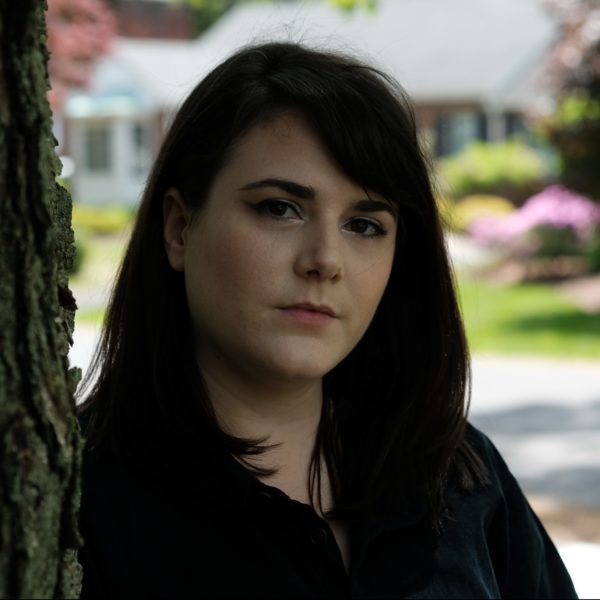
Image by Kevin Laminto/Unsplash.
All My Life, I’ve Imagined Myself in Paintings
I began picturing myself inside of paintings early on: Impressionist, Post-Impressionist, Fauvist, Expressionist, even the slapdash of total Abstraction. It didn’t so much matter whether the artist had invited any visitors — if no human figures stalked the work, so much the better. I’d have the place to myself.
My parents met in graduate school when my father was my mother’s art professor. They were (and are) both painters, and though I wasn’t raised with organized religion — she was opposed, he indifferent — they worshipped art with a religious kind of fervor that became ingrained in me. “You were brainwashed,” my dad agrees. I looked at paintings all the time growing up: in my parents’ studios, galleries, the books that lined our shelves. Both taught art classes in Albany, New York, where we lived because my father had a full-time position at the state college, and made their own work on the side. The marriage was strained — with some points of contention over who painted too much and spent too little time with family — and I was an anxious kid who struggled with transitions.
To calm myself, I imagined decamping into painted landscapes where time stood frozen, and so could I. The idea likely came to my kid brain courtesy of Disney’s Mary Poppins, the scene where Mary transports her charges inside Bert’s chalk drawing: I’d find myself sitting against a scratchy Monet haystack, face sliced up by sunlight; wading through long grass in the diorama of some green Constable farm; lost within crags of a Caspar David Friedrich moor; safe in the reverent stillness of Vermeer’s drawing room; fallen prey to Kinkade’s empty kitsch, the cottages at Christmas with every window lit, spilling warmth onto the snow outside; twinkling amongst the yellows of Mondrian’s Broadway Boogie-Woogie; or sinking heavy, resigned, into a Rothko color pool.
I aspired to exist — not standing still or moving, exactly, but as an integral chunk of pigment — inside an already-refined world. One that wouldn’t shift. I’m an anywhere but here girl, too: In California (where I now live), I dream of shivery New England autumns. At home in New York, I lust for the peach-pink sunsets and ocean breezes of Florida. I’m rarely satiated in real time for long, but paintings let me skate from place to place. Appear in them, suddenly, as the wardrobe opened onto Narnia.
As far as adventure — leaving the boundaries of an artwork to explore — my imagination rarely wanders that far. I prefer anticipation, gazing at beauty without setting out to meet it; admiring the scenery of where I’ve transported myself, but not touching. Nature in an unnatural, quieter state: No bugs, no hot sun, no sweat, no bitter chill.
A specific scene feels sheltered, humming with the potential for expedition, while I remain prudently on the precipice. I wait here for the same reason I look forward to a trip more than I actually like taking it, the beginning of a relationship, when it’s all conjecture and hopeful projection, the year before I went to college when I knew I was leaving, but didn’t have to do it yet, and could savor the sanctuary that was home for a time.

I’m less pretentious than my parents about art worship, at least — more willing to consider camp, kitsch, the corporate genius of Pixar. They will both hate to hear that I envision myself inside Thomas Kinkade paintings. But in some small but smarting ways, their cultural devotion made its way into my own views on life and art. I found myself drawn to writing about art that was challenging, confusing, forceful, not intended for practical or superficial purposes (as Kinkade’s art, admittedly, is). Unfortunately, that type isn’t always so readily accessible. To me, “good” art is full of life’s ambiguities and contradictions, but at the same time it’s distilled, more perfect. Allowing for a sense of completion that doesn’t exist anywhere else. People write, paint, compose, and choreograph in attempts at understanding their private motivations and obsessions, and non-creators, too, immerse themselves in the perspective of artists, in works that strike a familiar chord. Real life is inconsistent and horribly unsatisfying — but in art, there’s control. The mess can be made beautiful. You’ll finish it as you want, or step away, or burn the whole thing down. I suspect this temporary harmony is what others seek in more traditional doctrines: from paging through ancient words of the Bible, Qur’an, or Torah; a sympathetic confessional booth wherein sin is pardoned; a monastery where silence curtails the howling world; fasting and praying and sacrificing in service of some higher ideal.
My parents’ personalities didn’t ultimately gel — they’re divorced, and happily married to other people — but combined, the pair’s collection of art books, thick catalogues from contemporary exhibitions they attended in New York, heavy tomes on The Greats that must’ve left ink cartridges exhausted, swelled into the thousands. Those are books I’ll have to contend with someday. I picture them overflowing from our windows like the spaghetti in Strega Nona, the children’s story about a magical pot making more and more pasta until it creeps over rooftops and curls in tidal waves down Italian streets, alarming the townsfolk. I think about what I’ll do with the books when my parents die. I love them (the books and my parents) but they are a burden (just the books). Art appreciation is the inheritance from my life with these people, as much as my bone structure, mannerisms, humor. The books are a physical manifestation of that legacy, though my generation can ill afford big houses to horde spaghetti spills of literature. All we’ve got are Kindles, and Kindles cannot decorate a home. They are not friends the way books or paintings can be.
It seems I’m not alone in finding friendship and home in the confines of a canvas. In addition to Mary Poppins, I’ve seen the concept of living in painting reflected back to me in different ways throughout the years. In Vincent Ward’s 1998 film What Dreams May Come, heaven is presented to Robin Williams’ character Chris as a living replica of his wife Annie’s painting; this brushstroked nirvana is simultaneously a comfort to him and a manifestation of his own denial, a state of ambivalence I can relate to. Chris awakens, post-death, in a sea of flowers — and when he touches one, it crumbles and stains his hand blue. Where he steps, footprints smudge the colors. The paint is still wet — this world is brand new — my own chimera, brought to life. But it remains in acrylic only until Chris is ready to accept his fate; then objects become more tangible, made of real stuff. Living inside a painting is just a crutch, biding Chris’ time until he makes peace with death and begins to explore his surroundings, get reacquainted with departed loved ones, move on.
I thought about my father’s obsessive life within his own art when we attended the revival of Stephen Sondheim’s Sunday in the Park with George together last year, a limited run at New York’s Hudson Theatre with Jake Gyllenhaal as painter Georges Seurat in place of Mandy Patinkin, who has most notably played the part. The musical is inspired by the life of French pointillist artist Seurat and his masterwork “A Sunday Afternoon on the Island of La Grande Jatte,” an enormous painting that resides in Chicago’s Art Institute. (See it, if you can.) The plot revolves around Seurat’s becoming lost in his painting, struggling to balance love for Dot, his muse and mistress, with the feverish need to create. Among the most exquisite moments ever put to stage happens at the conclusion of Act I, during a song that sees Seurat crafting his seminal painting, based on the people enjoying a small suburban park on a lazy Sunday afternoon. “Forever / By the blue, purple, yellow, red water / On the green, orange, violet mass of the grass / In our perfect park,” sing the real life models as he traps them using colors you’d never think could make up sky or grass or water or skin.
Torn and unsatisfied — Seurat has alienated Dot in his quest to bring order and harmony to blank canvas by “design, composition, tension, balance, and light” — but unable to disobey his calling, Seurat finally takes control. The arguments and frolics of the park-goers cease, as he directs their bodies, like a weary God, into the final tableau. Fuzzy women in flowered hats clutch parasols; men in black top hats sit and watch the river; dogs sniff the grass. Here they’ll stand, immortalized forevermore. Dot is out in front, holding a pet monkey on a string. A curtain lowers over the audience, bearing a shimmering replica of the painting itself, identical to the scene just laid out.

Sondheim seems to question: Is it worth it? Can we have as rich a life within art as outside of it? Do artists make shitty parents, husbands, friends?
My dad had a handwritten note taped to his studio wall the entire time I was growing up that read “Fresh Air,” a reminder to listen to Terry Gross on NPR; but as a kid, I thought it was a reminder to leave his studio and get some fresh air. That’s how much time he spent cloistered inside, alone, painting — still does. It’s not any harder than having a parent with a 9 to 5, working all day and coming home too tired to play. But knowing your dad is upstairs, yet distant, inexplicably somewhere else — that’s a curious sensation, one less easily understood by a kid or a sympathetic public. Perhaps that’s why all three of his wives have been painters.
For art is demanding. It’s selfish. It requires sacrifice some have difficulty making. The tradeoff is in becoming a creator, fashioning worlds out of nothing. “Look, I made a hat / Where there never was a hat,” Seurat brags with a touch of self-loathing in the Sondheim musical’s most heartbreaking number, “Finishing the Hat.” He has spent a lifetime mapping out a sky, studying a face, finishing a hat — as real people and experiences passed him by.
Being stuck inside a painting is easier than living, but lonelier too. I could see parallels between Seurat’s story and my own tendency to retreat; and also in my father’s hesitancy to explore the world and his homebody proclivities All at once, life inside a painting looked sad to me. I knew if I could see the fantasy through to fruition, it wouldn’t satisfy. It was unreasonable, such isolation. The world moves on.
A grasshopper was found inside a van Gogh from 1889 last November. The cheeky bugger was embedded in “Olive Trees,” discovered by an official at the Nelson-Atkins Museum of Art in Kansas City. He lived there for 128 years, undetected. I’d like to be pressed into a canvas when I die, too, I thought, instantly, when I read the story. You can, technically, paint with the ashes of human remains — but this notion seems ghoulish and ripe for too many mistakes. What if I’m used to make a painting I don’t think is good enough for all eternity?
When I reached my 20s, I began adding guests to the paintings I imagined myself inside. I both did and did not want to be alone anymore. Loneliness is luxurious and cozy, a beaded shawl to wrap around oneself tightly, but only another person can provide the warmth that’s needed long term. More frequently, there was some man I loved in real life to push me on a Fragonard swing, sit beside me at an Edward Hopper diner counter, or help shepherd the sheep in a Thomas Cole arcadia (Cole painted in the Catskills, very near where I grew up).
Both of my parents, rather late in life, found partners who understood their respective artistic inclinations. Though Seurat was never able to pull himself from the canvas, my dad has met people who extract him from his studio (in particular, his new wife — a fellow painter, who also shares his needs). I, too, have come to notice there are others who might tread alongside me through a field of Monet wheat. In the flesh, outside of my imagination. There’s bugs, but there’s good company.
So then, art is less full of solitude than I had previously envisioned. And it’s hardly the only important thing.
Frank O’Hara’s poem “Having a Coke With You” is about falling in love and noticing that art is rendered suddenly inconsequential by comparison. Against flesh and blood and beating heart, statuary and paint strokes flicker and dissipate, unable to harrow up your soul the way a real person can. “What good does all the research of the Impressionists do them / when they never got the right person to stand near the tree when the sun sank?” O’Hara asked, and very reasonably at that. Delighting in art with someone who loves it the way you do — not going in alone, but rather peering in, together — is a healthy compromise. I’d like to admire Seurat’s hat, the one he gave up so much to finish, then step outside to see the real park on the banks of the River Seine. The way sunlight must flicker on the water, how the wind sounds in the trees, the chatter of park goers who don’t realize they’re being sketched — all this can never be immortalized, not precisely. It won’t be the same again. That’s what makes the real thing, and real people, so special, so tragic, and alive.


Share your reflection